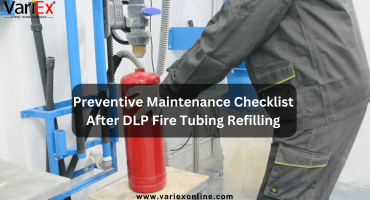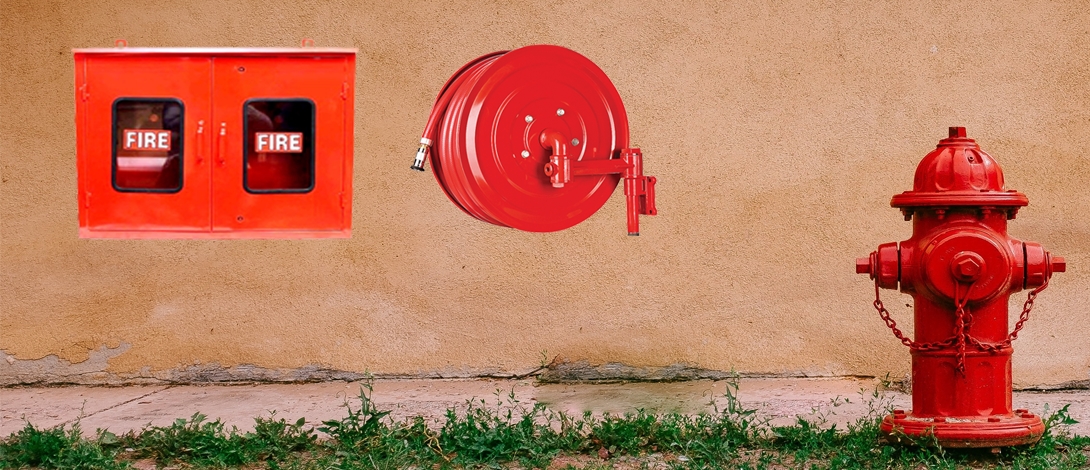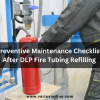![]()
Fire Immuniser
+91-7829629111
Email: info@variex.in
Varistor Technologies Pvt. Ltd.
Block-1, First Floor, Ardente Office One, Hoodi Circle, ITPL Main Road, Bengaluru, Karnataka 560048, IN
How To Start Fire Hydrant System
Fire hydrant systems are crucial for fire safety in buildings and communities. They provide a ready source of water for firefighting operations in the event of a fire emergency. Understanding how to properly start a fire hydrant system is essential for building managers, firefighters, and anyone responsible for fire safety. This guide will walk you through the process step-by-step.
Step 1: Assess the Situation Before attempting to start a fire hydrant system, assess the situation to ensure safety. Check for any signs of fire or smoke and make sure the area is clear of bystanders. If there is an active fire, immediately call the fire department and follow their instructions.
Step 2: Locate the Fire Hydrant Identify the location of the fire hydrant nearest to the building or area you want to protect. Hydrants are typically located along streets or sidewalks and are marked with a reflective marker or a sign indicating their presence.
Step 3: Gather Necessary Equipment Before starting the hydrant, gather the required equipment, including a hydrant wrench, a pike pole, and a hose. Ensure that all equipment is in good working condition and readily accessible.
Step 4: Open the Hydrant Valve Using the hydrant wrench, open the valve on the hydrant by turning it counterclockwise. Be cautious when opening the valve, as water pressure can be high and may cause the hydrant to surge or spray.
Step 5: Flush the Hydrant Once the hydrant valve is open, allow water to flow freely from the hydrant for a few moments to flush out any debris or sediment that may have accumulated in the pipes. This helps ensure that clean water is available for firefighting purposes.
Step 6: Attach the Hose After flushing the hydrant, attach the hose to the outlet nozzle using the appropriate fittings. Make sure the hose is securely connected to prevent leaks or disconnections during use.
Step 7: Test the Water Flow Once the hose is attached, slowly open the nozzle valve to test the water flow. Gradually increase the flow to the desired level, ensuring that the pressure is sufficient for firefighting purposes.
Step 8: Monitor the System Once the fire hydrant system is operational, monitor it closely to ensure that water continues to flow steadily and that there are no leaks or other issues. Be prepared to shut off the hydrant quickly if necessary.
Step 9: Shut Down the System When you no longer need the fire hydrant system, close the hydrant valve by turning it clockwise with the hydrant wrench. Make sure the valve is fully closed to prevent water wastage and to maintain the integrity of the system.
| Step | Action | Details and Considerations |
|---|---|---|
| 1 | Assess the Situation | - Check for fire or signs of smoke. Ensure bystanders are clear of the area. |
| 2 | Locate the Fire Hydrant | - Identify nearby hydrants marked by signs or color-coded caps. |
| 3 | Gather Necessary Equipment | - Ensure availability of hydrant wrench, pike pole, hose, and fittings. |
| 4 | Open the Hydrant Valve | - Use hydrant wrench to turn valve counterclockwise gradually. Watch for surges of water. |
| 5 | Flush the Hydrant | - Allow water to flow to flush out debris and sediments. Ensure clear water for firefighting. |
| 6 | Attach the Hose | - Securely connect hose to outlet nozzle. Use appropriate fittings for a tight seal. |
| 7 | Test the Water Flow | - Slowly open nozzle valve to test flow. Monitor pressure gauge for desired level. |
| 8 | Monitor the System | - Check for steady water flow and absence of leaks. Inspect connections and valve regularly. |
| 9 | Shut Down the System | - Close hydrant valve by turning clockwise with wrench. Ensure valve is fully closed to prevent water wastage. |
Conclusion
Starting a fire hydrant system requires careful planning, proper equipment, and knowledge of the process. By following the steps outlined in this guide, you can ensure that your fire hydrant system is ready to provide vital water resources in the event of a fire emergency, helping to protect lives and property. Remember to always prioritize safety and follow any additional guidelines provided by local authorities or fire department personnel.
Frequently Asked Questions
A fire hydrant system is a network of pipes, valves, and hydrants designed to provide a ready source of water for firefighting purposes in buildings and communities.
Fire hydrant systems are connected to municipal water supplies and typically consist of underground pipes leading to above-ground hydrants. When needed, the hydrant valve is opened to allow water to flow through hoses to extinguish fires.
The responsibility for maintaining fire hydrant systems often falls on building owners, property managers, or municipal authorities, depending on the location and jurisdiction.
Fire hydrants should be inspected and tested regularly to ensure they are in proper working condition. Frequency may vary, but it's common to conduct inspections annually and testing every few years, depending on local regulations.
Common issues with fire hydrant systems include leaks, valve malfunctions, clogged pipes, and inadequate water pressure. Regular maintenance and inspections help identify and address these issues promptly.
Final Say
At VariEx.in and VariexOnline.com, we specialize in supplying and installing top-quality fire fighting systems and equipment. From fire extinguishers to advanced suppression systems, we offer comprehensive solutions tailored to your needs. Our experienced team ensures precise installation and maintenance for optimal safety.
Trust VariEx for reliable fire protection. Contact us online or call 7829629111 to learn more.
"WHAT YOU CAN READ NEXT"
 Read more +24 November 2023 in Fire Extinguisher
Read more +24 November 2023 in Fire ExtinguisherWhat types of fire extinguishers are available for different fire classes?
 Read more +11 July 2025 in Fire Suppression
Read more +11 July 2025 in Fire Suppression







